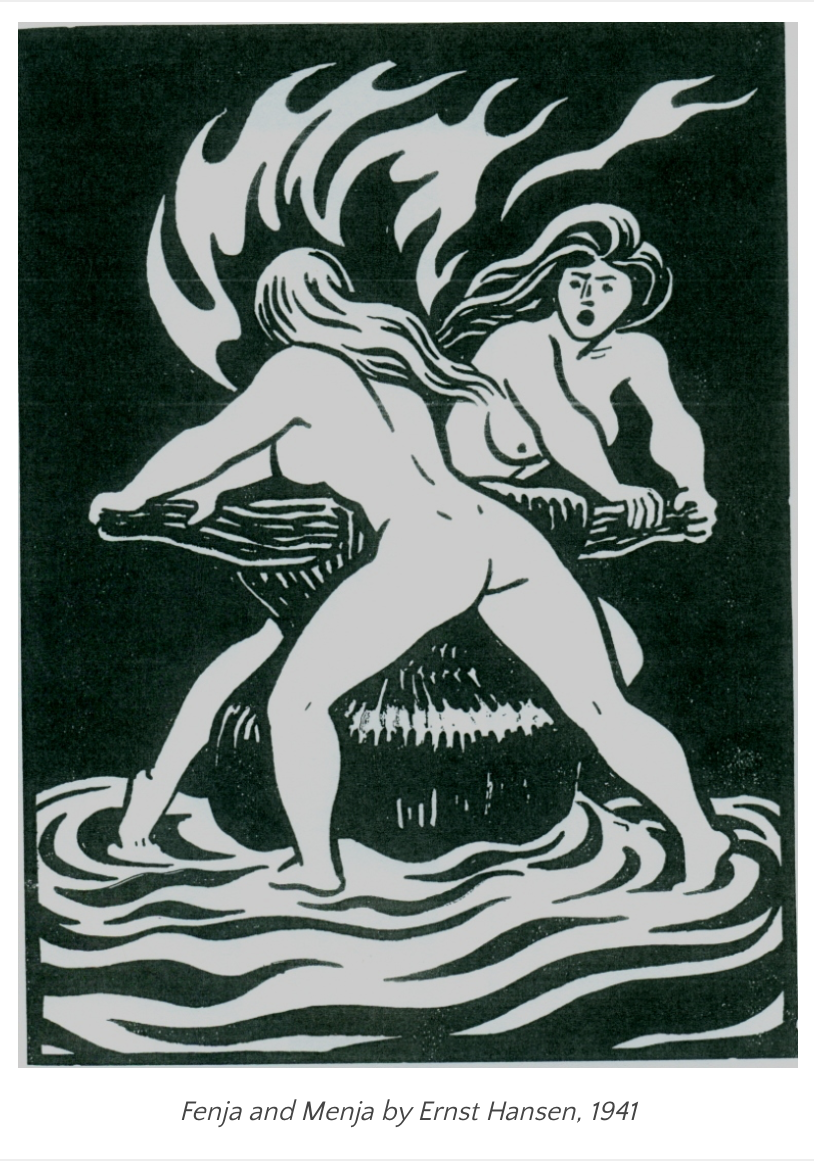Fenja And Menja, The Grotte-Mill And The Fimbul Winter

An important element in my Invisible College Trilogy is the Book of Mysteries, entitled Temple Walden – A View of Its History, Origins and the World Order. The title page identifies it as An account of the ancient mysteries, as recorded with diligence through the ages and recounting the truth and destiny of the true believers throughout history.
The book, in three volumes, one of which is missing, collates many myths and legends from across the world to form a prophecy, the fulfilment of which will lead The Sect to global power.Included among these myths is that of the goddesses Fenja and Menja, which has its origins in a poem and an ancient song. Fenja and Menja turned the handle of the giant Grotte-Mill, or world-mill, located beneath the sea, to grind gold, peace and safety for King Frode. The mill handle sweeps the uttermost rim of the world, turning not only the millstone but also the starry heavens.
The sailors and shepherds of the time believed that the stars resembled glistening nails driven into a moveable ceiling and that the starlight sky revolved around a fixed point, the world-nail, or world-spike, which was the pole star.
When King Frode, driven by greed for more gold to be ground, refuses Fenja and Menja rest, they exact their revenge by turning the mill more and more violently. So violently that the millstone breaks into pieces, triggering an earthquake whose magnitude disrupts the motion of the stars and causes the terrible fimbul winter, that lasts for years. This is believed to refer to the historically factual extreme weather of 535-536 CE.
Illustration of Fenja and Menja by Ernst Hansen.